Why I Love Bike Sebring
February 26, 2016/ Jim Parker
I love Bike Sebring. The organizers make recumbents feel welcome, which helps attract more recumbent racers than any other ultracycling event in the USA. Bike Sebring 2016 was a landmark event for Cruzbike, Inc. because for the first time, fully one-third of the 2-wheeled recumbents in the various races were Cruzbikes. This is especially noteworthy as the headquarters of two competing brands of 2-wheel recumbents are located in Florida. Cruzbike racers Ben Tomblin and Kevin Gambill also put up more miles than any other recumbent racers in the 24-hour and 12-hour events, respectively.
Cruzbike racers winning events is nothing new, but what happened in the fabled 12-hour Sebring race is worth an in-depth analysis. Kevin Gambill put in an astounding 276.6 miles, which not only took first place but broke the long-standing recumbent course record set by John Schlitter (269.5 miles) in 2006. In addition, he broke the OVERALL course record of 271.4 miles set by Kurt Searvogel on a standard bike.
Before I get to the detailed analysis that shows just how extraordinary Kevin’s performance was, here’s a little background info about 50 year-old Kevin Gambill. He’s a newcomer to competitive cycling. Similar to my wife, Maria, his main athletic activity prior to entering the ultracycling scene was running, including running in the elite Boston Marathon. He recently began cycling to have less wear-and-tear on the body while getting a great workout. Until 2014 he had never ridden a bike more than 40 miles. That year he spent 38 days riding unsupported across the USA on a 35 lb. steel Trek carrying 40 lbs. of gear, raising money for the charity Dream Factory.
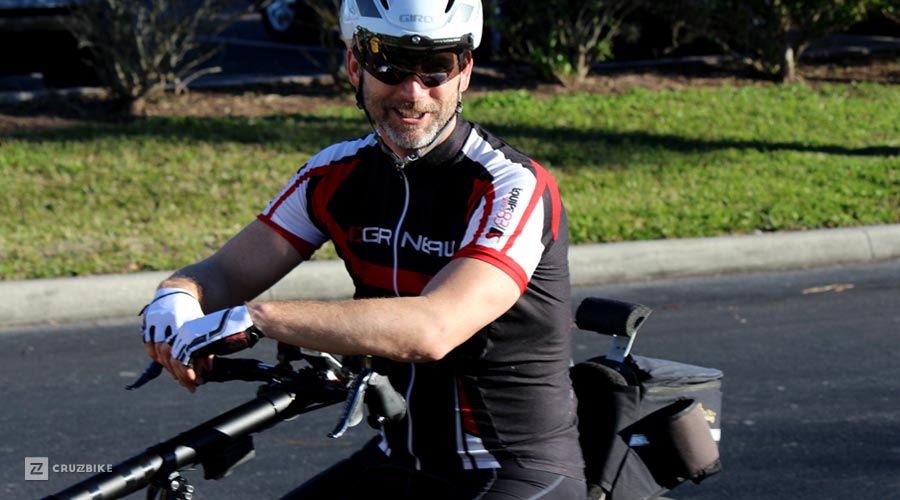
Catching up with Kevin Gambill on Friday afternoon before the race.
Maria and I first met Kevin at the 12-hour Sebring race last year where he placed 3rd overall (and 3rd among recumbents) while riding a Bacchetta CA2. He can be seen in the popular “recumbent rotating paceline” video from that race. We raced with him again at Calvin’s Challenge, where he finished in 6th place on the CA2. After Calvin’s, where two Cruzbikes took 1st and 2nd overall, he switched from the CA2 to the V20 for the 24-Hour “National Challenge” in Michigan in June 2015. At that race, he placed1st among nine recumbent males and 4th overall. In July, he entered Jay’s Fat-Ass 12-hour race, where he won 1st overall on a hot day with temps in the 90s. Collin Johnson, an excellent standard ultracyclist, who had beaten Kevin at Calvin’s and the NC24H, finished about 17 miles behind him. Obviously, Kevin adapted very quickly to the Cruzbike V20, despite doing most of his training on a standard bike. Looking back, I think there were clues he would be the type to excel on a Cruzbike V20.
These were his email comments to me less than a year ago after his very first ride on the V20:
“I got the frame earlier in the week, built it up this morning and took it out for a first ride this afternoon. After fiddling around for a few minutes I was clipped in and riding, did a few laps around the parking lot then hit the road for about ten miles and went up and down a few hills, no problems holding a line. Felt pretty stable, climbs well, first time I pedaled hard at speed it wobbled a bit but adjusted quickly and was no problem after that. The little bit of subconscious pulling (maybe not supposed to do that?) on the handlebar is similar to a DF (for me anyway) and kept the wheel straight when pedaling hard or climbing. I still ride DF bikes quite a bit and this bike seems to assimilate those instincts more than I anticipated. I was prepared for it to be a bear to ride but I was pretty comfortable on it all things considered.”

Now let’s look more closely at the race. The weather conditions were good, but not perfect. Winds were less than 10 mph most of the day, but not calm. No doubt the light winds and cool temperatures helped the racers achieve high mileage, but the weather has been nice before. Not all the conditions were primed for fast times. An unusual full-stop occurred near the beginning of the race as it passes through the town of Sebring. According to Race Director Mark Andrews, the man who normally arranges the police escort through the stop lights in Sebring was sick. Therefore we had to proceed cautiously through traffic and come to a full stop and wait for a light to cycle. Other years, the police have blocked the intersections and waved us straight through.
Unlike some racers, Kevin had no rolling motor vehicle support vehicle on the course for the 50-mile return leg, an oversight on my part that probably cost a few minutes trying to re-stock in the mayhem of the 50-mile turn-around point. Kevin also rode alone (no drafting) for the last 175 miles. As I will show below, the records he broke were set by individuals working in groups throughout the race.
First, the 12-hour recumbent record was set at 269.5 miles by John Schlitter and Bill Wolff in 2006. In the chart below, you can see the elapsed time for the four fastest racers. I have highlighted in yellow the lap times that are within 30 seconds of the other riders, indicating they were working together in this drafting race. You can see this group of four stuck tightly together until the very end.

In the next table, the 2012 lap times for the 12 & 24 hour drafting races are presented to show a group of between five and seven racers working together for 12-hours. This teamwork helped yield many records in both the 12-hour and the 24-hour drafting events. Kurt Searvogel was the only racer registered for the 12-hour event of the five racers who put in 271.4 miles before the 12-hour mark.
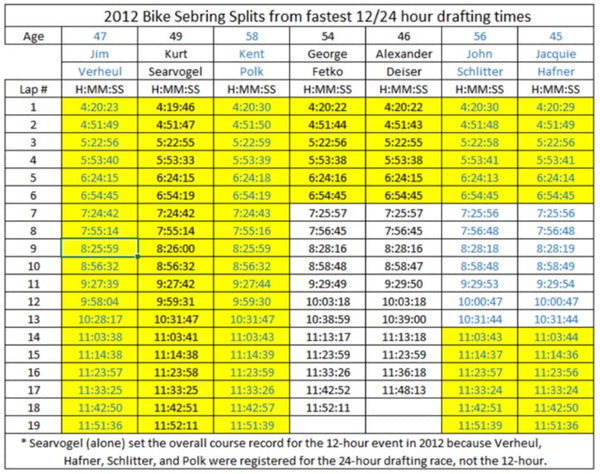
The next table shows Kevin’s lap times among the four fastest racers in the field. You can clearly see that Kevin only had someone to draft during the first 101.5 mile lap. During the first half of that lap, the group was large, but we got split up after the turn-around and the last half of that lap it was just Kevin, Dave Lewis, and me.
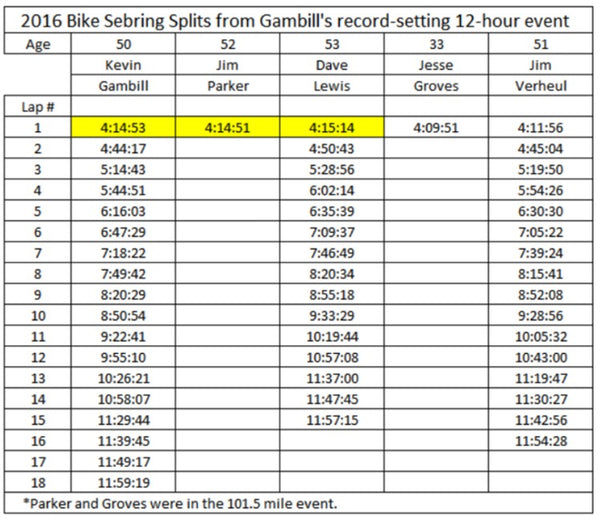
Therefore after lap 1, Kevin was riding non-drafting for the next 175 miles. That brings up an interesting comparison. International elite ultra-racer Marko Baloh was riding the same course non-drafting in the 24-hour RAAM-qualifier event… at an incredible record-setting pace. He ultimately logged 533 miles in 24-hours, smashing the previous record that he set last year, and breaking the long-standing record set by Dennis Grelk in a streamliner. Marko is a phenomenal racer. His form is perfect. His performance at Sebring this year was epic. His pacing is incredibly steady and he almost never stops. Here is a table comparing Marko and Kevin’s lap times for the first 12-hours. Laps when one was slower than the other are in red type. It’s amazing how similar their times are.
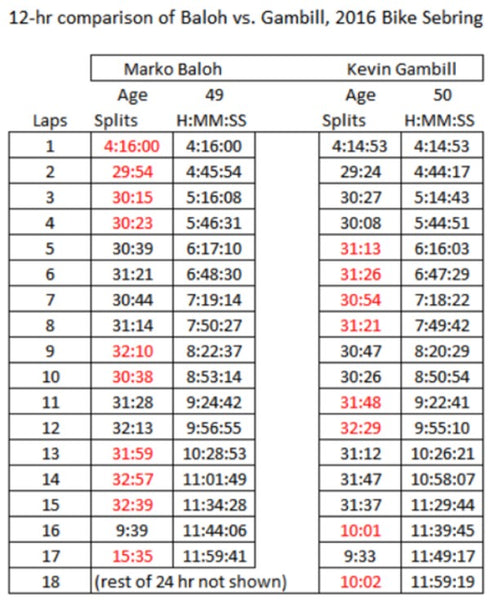
Spectators at Bike Sebring this year saw three historic performances: 1) Marko Baloh setting the overall 24-hour record, 2) Sarah Cooper setting the overall women’s 24-hour non-drafting record (surpassing Maria’s record), and 3) Kevin Gambill setting the overall 12-hour course record. Score 2 for standard bikes and 1 for recumbents at Bike Sebring 2016.
So what else happened with Cruzbike racers?
In the 24-hour non-drafting RAAM qualifier, Ben Tomblin racked up the most miles among five recumbent racers in the 24-hour events, with a very solid 464.3 miles. Ben is gaining more experience riding through the night and planning for RAW or RAAM someday soon.
Larry Oslund was on a great pace in the 12-hour race for the first 100 miles, but had a tire blowout and he wrecked (again!), dislocating his shoulder. Larry came back to the track after his visit to the ER to check on his Cruzbike team mates. What a guy. Update: Larry decided to compete in the 2016 Florida HPRA races one week after this wreck… and he won all of the stock events!
Paul Gagnon came in 3rd place (of 5 racers) in his age-group, with 187.2 miles (his race report is here). I was helping crew at one point in the afternoon when he pulled up with a massive muscle cramp in his left calf. I was very impressed that he was able to keep going. Paul is also relatively new to the Cruzbike, but doing great on it.
Hardy Swinson did 5:05:01 in the 101.5 miles Century event, which is especially impressive considering that he had to stop for two flats. Read his story here.
Maria Parker decided to race the 12-hour event on a Silvio S30, to showcase that you can still be quite fast on a bike designed for comfort. The suspended bike took her 241.5 miles, despite stopping a few times along the way to chat with people (and lend moral support to Hardy when he flatted). Her mileage was still good enough for 2nd place overall among the women. Maria’s Sebring story is here.
I placed 2nd overall in the Century event, finishing in 4:14:51. That time was 40 seconds slower than last year, but I missed a turn this year, and got hung-up at the turn-around and let two racers slip away. Next year I won’t let that happen.
Commentary on Kevin’s performance and the advantage of the dynamic-boom Cruzbike
Anyone who has spent much time on our forum or blog pages has read about how Cruzbike’s dynamic boom confers an advantage over fixed boom recumbents, not only by virtue of the compact drivetrain, but also the addition of a small amount of power produced through the upper body and core muscles, similar to the way standard bike riders gain advantage when they rise out of the saddle and lean their frame. However, seldom do we have as great an illustration as Kevin’s experience in ultracycling races, switching from fixed-boom to dynamic boom mid-season, and getting just enough advantage to go from honorable mention to gold medal. Of course, not everyone will adapt so quickly to the Cruzbike, and my experience teaches me that a small percentage of riders will not adapt before they give up trying. What makes some riders adapt quickly, and others, adapt more slowly? I think the key is in the core muscles of the torso being not only strong, but coordinated for rapid alternating movements as runners, swimmers, and many other types of athletes must be. Riding a dynamic boom Cruzbike effectively requires good core muscle strength and coordination. Those who bring those strengths to the Cruzbike from a history of doing other activities that require them will adapt more quickly than those who need to build them up from scratch.
And on a final note, it was truly a pleasure to see so many friendly Cruzbike owners and their friends and families. It felt like a reunion. We also loved to see all of our ultracycling friends, regardless of what type of bike they ride; but seeing the growing circle of Cruzbike racers is especially satisfying. I believe we are slowly making headway in convincing the naysayers that these bikes are truly faster and more efficient (at least for most people) than fixed-boom recumbents. The constant drum beat of victories in races across the country is hard to ignore. At Bike Sebring 2016, Kevin Gambill pounded that drum the loudest.
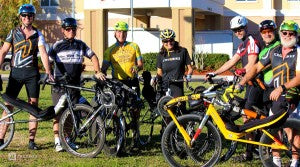
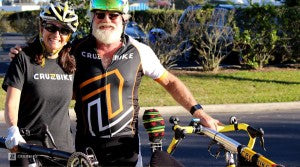
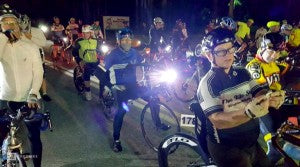
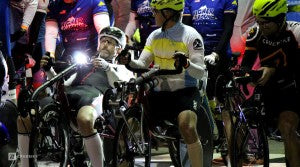
Kevin, next to fellow V20 racers, Larry Oslund and Ben Tomblin at the start.
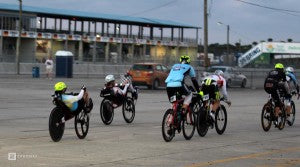
Kevin, Larry and Ben exiting the track.

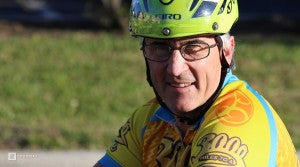
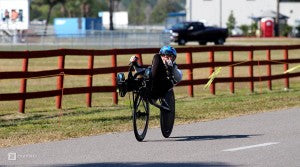
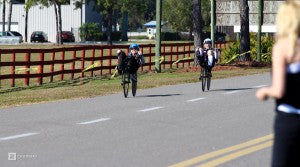
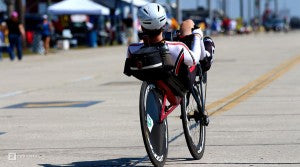
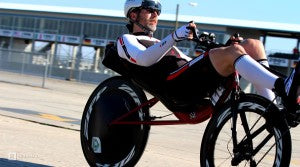
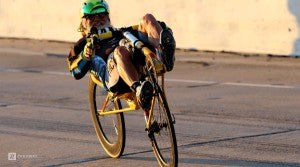
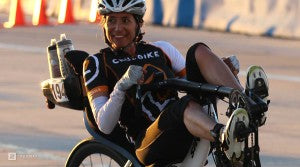

Kevin heading in for his last race segment on the track.

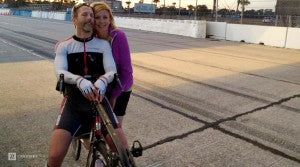
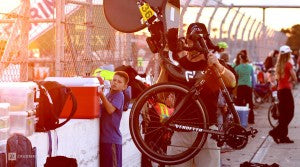
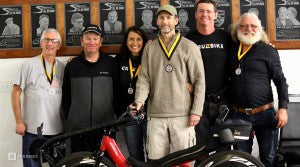
Kevin and Gretchen, wife and crew extraordinaire, at the finish.


Leave a comment